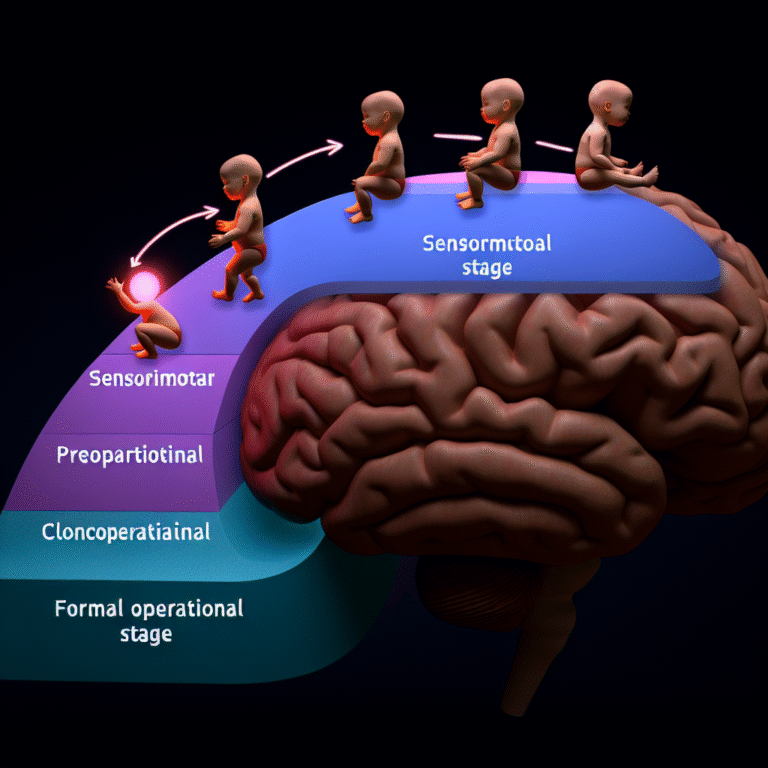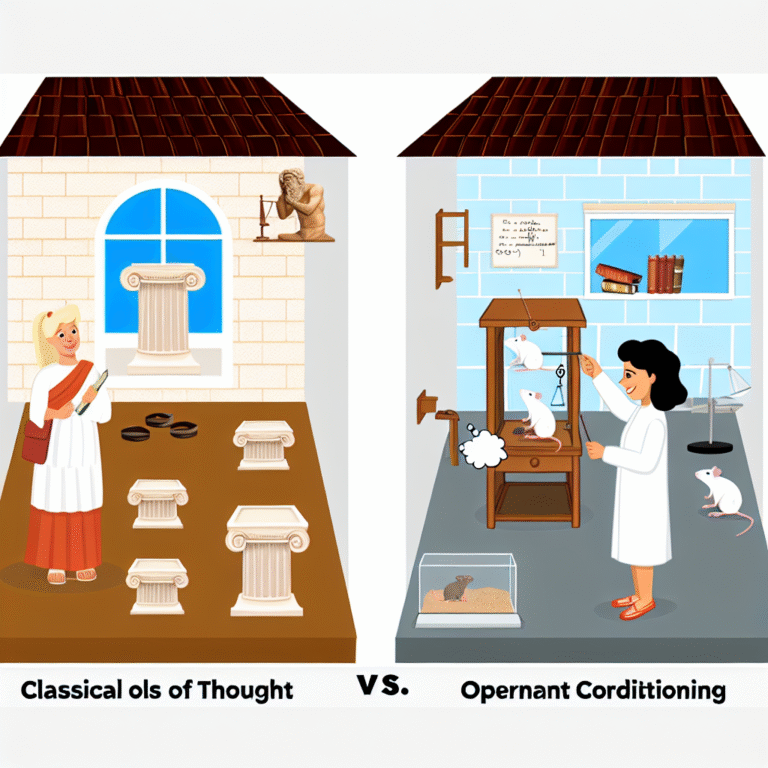
The Two Faces of Learning: Demystifying Classical and Operant Conditioning
Introduction
Imagine you’re at the local park, and you hear the jingle of a bell. Instantly, your mouth waters at the thought of ice cream. Or think about your dog, who eagerly runs to the door every time you pick up the leash. These scenarios aren’t mere coincidences; they are powerful examples of how learning shapes our behaviors. Welcome to "The Two Faces of Learning: Demystifying Classical and Operant Conditioning." In this article, we will explore the fascinating mechanisms behind these two fundamental forms of learning, helping us uncover the intricate ways in which we, and other creatures, adapt and thrive.
Understanding the Foundations of Learning
What is Learning?
At its core, learning can be defined as a relatively permanent change in behavior arising from experience. But how do we acquire these behaviors? This is where classical and operant conditioning come into play.
Classical Conditioning: The Basics
Developed by Ivan Pavlov, classical conditioning is a learning process that occurs through associations between an environmental stimulus and a naturally occurring stimulus. Pavlov’s famous experiment with dogs illustrates this perfectly. He discovered that by repeatedly pairing the sound of a bell with food, the dogs would eventually salivate at the sound of the bell alone.
Key Terms in Classical Conditioning:
- Unconditioned Stimulus (US): A stimulus that naturally triggers a response.
- Conditioned Stimulus (CS): A neutral stimulus that, after being associated with an unconditioned stimulus, begins to trigger a conditioned response.
- Conditioned Response (CR): The learned response to the previously neutral stimulus.
| Term | Definition |
|---|---|
| Unconditioned Stimulus | A naturally occurring trigger for a response |
| Conditioned Stimulus | An initially neutral signal paired with a US |
| Conditioned Response | The learned reaction to the CS |
Operant Conditioning: The Basics
B.F. Skinner took a different approach to studying learning. He looked at how behavior is shaped by its consequences, giving rise to the theory of operant conditioning. In simple terms, this form of learning occurs when behaviors are strengthened or weakened by rewards or punishments.
Key Concepts in Operant Conditioning:
- Reinforcement: Any consequence that strengthens a behavior.
- Positive Reinforcement: Adding a desirable stimulus to increase a behavior (e.g., giving a treat for sitting).
- Negative Reinforcement: Removing an aversive stimulus to increase a behavior (e.g., taking away a chore when a child achieves good grades).
- Punishment: Any consequence that weakens a behavior.
- Positive Punishment: Adding an aversive stimulus to decrease a behavior (e.g., scolding a child for misbehavior).
- Negative Punishment: Removing a desirable stimulus to decrease a behavior (e.g., taking away a toy when a child misbehaves).
| Concept | Definition |
|---|---|
| Reinforcement | Strengthening a behavior through rewards |
| Positive Reinforcement | Adding a pleasant stimulus to increase a behavior |
| Negative Reinforcement | Removing an aversive stimulus to increase a behavior |
| Punishment | Weakening a behavior through consequences |
Real-World Applications of Classical and Operant Conditioning
Case Study 1: Conditioning in Therapy
In therapeutic settings, classical conditioning can be applied to treat phobias through a process known as systematic desensitization. For example, if someone has a phobia of spiders (the US), exposure therapy can gradually introduce the person to spiders (the CS) in a controlled and safe environment. Over time, the individual learns to associate spiders with calmness instead of fear, illustrating "The Two Faces of Learning: Demystifying Classical and Operant Conditioning."
Analysis: This case study highlights how therapy can effectively use classical conditioning to rewire emotional responses, demonstrating its importance in mental health.
Case Study 2: Behavioral Training in Animals
Operant conditioning is particularly prominent in animal training. For instance, trainers often use positive reinforcement methods to teach dogs commands. By giving a treat every time a dog sits on command, the dog learns that obeying the command results in a reward.
Analysis: This case study emphasizes operant conditioning’s role in shaping behavior and improving communication between humans and animals, showcasing the practicality of the theory.
Comparative Analysis: Classical vs. Operant Conditioning
| Aspect | Classical Conditioning | Operant Conditioning |
|---|---|---|
| Focus | Association between stimuli | Consequences of behavior |
| Learning Method | Passive (learning via association) | Active (voluntary behavior change) |
| Primary Theorist | Ivan Pavlov | B.F. Skinner |
| Application | Therapy, fear conditioning | Training, behavior modification |
The Interplay Between Classical and Operant Conditioning
Although classical and operant conditioning are distinct, they work in tandem to influence learning and behavior. For instance, someone may develop a fear of dogs (a classical conditioned response) and subsequently avoid parks where dogs are present (an operant response to avoid discomfort). Understanding this interplay provides a holistic view of learning processes.
Case Study 3: Addiction and Conditioning
Addiction can serve as a compelling illustration of both conditioning types working together. An individual may initially experience pleasure from a substance (US), leading to cravings when encountering associated cues (CS) such as a particular environment. Over time, avoiding these cues can become an operant behavior reinforced by the absence of withdrawal symptoms.
Analysis: This case study emphasizes the complex nature of learning and behavior, showcasing how both conditioning types interact in real-life scenarios.
Enhancing Learning Through Understanding Conditioning
Practical Strategies for Applying Conditioning Principles
Positive Reinforcement in Education:
- Encourage student participation by offering rewards such as praise or tangible rewards for good grades. This enhances motivation.
Classical Conditioning in Marketing:
- Advertisements often pair products with pleasurable experiences. For example, a commercial featuring beautiful scenery may create a positive association, making consumers more likely to choose that brand.
Behavior Modification Plans:
- In homes or workplaces, creating a behavior modification plan that uses reinforcements for positive behavior can lead to significant improvements.
- Mindfulness and Fear Conditioning:
- Using mindfulness practices to create a space between conditioned responses and reactions can help individuals manage anxiety and fear responses more effectively.
Case Study 4: Educational Settings
In educational environments, integrating principles of both classical and operant conditioning can lead to improved student outcomes. For instance, teachers can use positive reinforcement (like praise) to encourage participation (operant conditioning) while using music or enjoyable activities (classical conditioning) to associate learning with positive feelings.
Analysis: This case study demonstrates the practical application of both conditioning types, ultimately fostering a better learning environment.
Conclusion
In "The Two Faces of Learning: Demystifying Classical and Operant Conditioning," we’ve journeyed through the fascinating landscape of how we learn and adapt. By unpacking the world of classical and operant conditioning, we can appreciate the nuanced ways in which our environments shape our behaviors, both consciously and unconsciously.
As you integrate these insights into your own life, consider how understanding these principles can enhance your personal growth, relationships, and even professional endeavors. Remember, knowledge is powerful, and applying it thoughtfully can lead to transformative change.
FAQs
1. What is the main difference between classical and operant conditioning?
Classical conditioning focuses on associations between stimuli, while operant conditioning is concerned with the consequences of behavior.
2. Can both types of conditioning occur simultaneously?
Yes, both classical and operant conditioning can occur at the same time and often influence each other in real-life scenarios.
3. How can I apply these principles to modify my own behavior?
Identify behaviors you want to change and apply reinforcement strategies to encourage positive actions, or use desensitization techniques to address fears.
4. Is one form of conditioning more effective than the other?
Effectiveness can depend on various factors, including the context and the individual’s experiences. Each has its strengths and applications.
5. How do these concepts apply to parenting?
Parents can utilize classical conditioning by associating positive experiences with behaviors they want to encourage (like end-of-day routines) and operant conditioning by reinforcing desired behaviors with praise or rewards.
By understanding and applying "The Two Faces of Learning: Demystifying Classical and Operant Conditioning," we can make informed choices that lead to more effective learning and behavioral changes in ourselves and others.
















